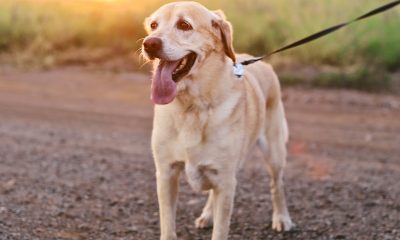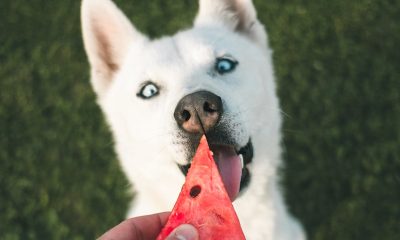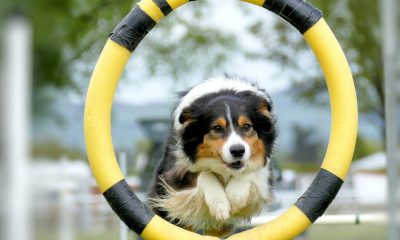Health Issues
Recognizing and Treating Canine Cataracts

Are your furry friend’s eyes cloudy, hindering their vision and quality of life? Discover how to recognize and effectively treat canine cataracts.
In this article, you’ll learn about common causes, signs, and symptoms of canine cataracts. We’ll guide you through the diagnostic process and present non-surgical and surgical treatment options.
We’ll also discuss breed predisposition, managing cataracts in senior dogs, preventive measures, and practical tips for living with a dog with cataracts.
Help your beloved companion see the world clearly again!
Common Causes of Canine Cataracts
You should know that genetics and diabetes are common causes of canine cataracts. Canine cataracts occur when the lens of the eye becomes cloudy, resulting in impaired vision. Genetics play a significant role in the development of cataracts, especially in certain breeds such as Poodles, Cocker Spaniels, and Siberian Huskies. Diabetes, on the other hand, can also lead to the formation of cataracts in dogs. High blood sugar levels associated with diabetes can cause changes in the lens, leading to its cloudiness.
Prevention is key when it comes to canine cataracts. Regular veterinary check-ups are essential to monitor your dog’s overall health, including their eyes. Managing underlying conditions such as diabetes through proper diet, exercise, and medication can help reduce the risk of cataract development. Additionally, protecting your dog’s eyes from injuries and avoiding exposure to harmful substances can also help prevent cataracts.
When it comes to treatment options, surgery is often the most effective approach. Cataract surgery involves removing the cloudy lens and replacing it with an artificial one. This procedure can significantly improve your dog’s vision and quality of life. However, the prognosis for canine cataracts depends on various factors such as the stage of the cataract, the overall health of the dog, and the success of the surgery. Early detection and prompt intervention are crucial for the best possible outcome.
Overall, understanding the causes, prevention, treatment options, and prognosis of canine cataracts is vital for serving the well-being of your furry friends. Stay vigilant, prioritize regular check-ups, and consult with your veterinarian for the best course of action.
Signs and Symptoms of Canine Cataracts
If your dog starts to frequently bump into objects or shows difficulty seeing in low-light conditions, it may be a sign of canine cataracts. Canine cataracts are a common eye condition among dogs, and they can significantly impact their quality of life. It’s important to recognize the signs and symptoms early on to ensure prompt treatment.
Here are some key points to consider:
- Regular eye examinations: Regular visits to the veterinarian are essential for detecting and monitoring the progression of cataracts in your dog’s eyes.
- Treatment options: Depending on the severity of the cataracts, treatment options may include medication, surgery, or a combination of both. Discuss with your veterinarian to determine the best course of action for your furry friend.
- Impact on quality of life: Canine cataracts can cause blurred vision, difficulty navigating, and decreased overall visual acuity. This can lead to a decrease in your dog’s independence and may affect their daily activities and overall well-being.
- Care and support: Providing a safe environment, avoiding obstacles, and maintaining a consistent routine can help your dog adapt to changes in their vision caused by cataracts.
Diagnosing Canine Cataracts: What to Expect
When diagnosing canine cataracts, you can expect to see common symptoms and signs such as cloudiness in your dog’s eyes, difficulty seeing in low light, and a change in their behavior towards light.
Your veterinarian will perform diagnostic tests and methods like a thorough eye examination, a slit lamp biomicroscopy, and possibly an electroretinogram, to confirm the presence of cataracts.
Early detection is crucial in order to prevent further progression and to ensure prompt treatment for your furry friend.
Common Symptoms and Signs
It’s important to regularly monitor your dog’s eyes for any changes in appearance or behavior that could indicate the presence of canine cataracts. Recognizing the symptoms early on can help in providing timely treatment options. Here are some common signs to look out for:
- Cloudy or opaque appearance in the eye.
- Difficulty seeing or bumping into objects.
- Increased eye rubbing or pawing at the face.
- Changes in behavior, such as reluctance to go outside or play.
If you notice any of these symptoms, it’s crucial to consult a veterinarian for a proper diagnosis and treatment plan. Canine cataract surgery is a common option to restore vision, but natural remedies for cataracts, such as certain eye drops or supplements, may also be considered.
Diagnostic Tests and Methods
Have you discussed with your veterinarian about the diagnostic tests and methods used to diagnose canine cataracts? It’s important to understand the different options available to accurately diagnose this condition in your beloved furry friend. Diagnostic imaging and genetic testing are two common methods used in the diagnosis of canine cataracts. Diagnostic imaging, such as ultrasound or X-rays, allows veterinarians to visualize the cataracts and assess their severity. Genetic testing, on the other hand, can help determine if the cataracts are inherited, which can be crucial for breeding purposes. By discussing these diagnostic tests with your veterinarian, you can ensure that your dog receives the most appropriate and effective treatment for their cataracts.
| Diagnostic Imaging | Genetic Testing |
|---|---|
| Ultrasound | DNA Testing |
| X-rays | Inherited Cataracts |
| Breeding Purposes |
Importance of Early Detection
Don’t overlook the importance of early detection when it comes to diagnosing canine cataracts. Regular check-ups for your furry friend can make all the difference in catching this condition early on. Canine cataracts can lead to potential complications if left untreated, such as vision loss or even blindness.
To emphasize the significance of early detection, here are four key points to consider:
- Prevention is key: Regular check-ups allow veterinarians to monitor your dog’s eye health and catch any signs of cataracts early on.
- Timely treatment: Early detection gives you and your veterinarian the opportunity to explore treatment options and reduce the risk of complications.
- Improved quality of life: By identifying and treating cataracts at an early stage, you can help maintain your dog’s vision and overall well-being.
- Peace of mind: Regular check-ups provide reassurance and allow you to address any concerns promptly, ensuring your dog receives the best care possible.
Non-Surgical Treatment Options for Canine Cataracts
If your dog has been diagnosed with cataracts, there are non-surgical treatment options available to help manage the condition.
One option is using eye drops specifically designed to address cataracts, which may help slow down their progression.
Additionally, nutritional supplements that support eye health can be beneficial in maintaining your dog’s vision.
Lastly, alternative therapies such as acupuncture or laser therapy may also be considered as part of a holistic approach to managing canine cataracts.
Eye Drops for Cataracts
You can potentially improve your dog’s vision by using eye drops specifically formulated to slow down the progression of cataracts. These eye drops contain natural ingredients that can help maintain the health of your dog’s eyes and potentially delay the need for cataract surgery.
Here are some key points to consider when using eye drops for cataracts:
- Consult your veterinarian: Before starting any treatment, it’s important to consult with your veterinarian to determine the best course of action for your dog’s specific situation.
- Follow the instructions: Use the eye drops as directed by your veterinarian or as indicated on the product label. Proper administration is crucial for effectiveness.
- Regular use is essential: Consistency is key when using eye drops for cataracts. Follow the recommended frequency of application to maximize the potential benefits.
- Monitor your dog’s progress: Keep track of any changes in your dog’s vision and report them to your veterinarian. Regular check-ups can help monitor the effectiveness of the eye drops.
Nutritional Supplements for Cataracts
Include a variety of fruits and vegetables in your dog’s diet to potentially provide the nutritional support needed for managing cataracts.
While cataract surgery is an option, many pet owners are interested in exploring natural remedies to support their furry companions.
Incorporating a balanced diet rich in antioxidants and vitamins can be beneficial for your dog’s overall eye health.
Fruits such as blueberries, carrots, and spinach are packed with nutrients like vitamin C, E, and beta-carotene, which are known to support eye health.
Additionally, vegetables like broccoli and sweet potatoes contain lutein and zeaxanthin, which may help reduce the risk of cataracts.
Remember to consult with your veterinarian before making any changes to your dog’s diet or considering natural remedies.
Together, you can determine the best approach to managing your dog’s cataracts and ensuring their well-being.
Alternative Therapies for Cataracts
To effectively manage your dog’s cataracts, consider exploring alternative therapies such as eye drops or herbal supplements, as well as implementing a balanced diet. While traditional treatments like surgery may be necessary in some cases, there are holistic options that can help improve your dog’s vision and overall eye health.
Here are four alternative therapies to consider:
- Eye exercises: Just like humans, dogs can benefit from eye exercises to strengthen their eye muscles and improve circulation. Consult with a veterinary professional to learn more about specific exercises for your dog.
- Herbal supplements: Certain herbs like bilberry and ginkgo biloba have been known to support eye health and reduce the progression of cataracts. Ensure you consult with a holistic veterinarian to determine the right dosage and administration method.
- Acupuncture: This ancient practice can help stimulate blood flow and energy to the eyes, potentially improving vision and reducing cataract symptoms. Find a qualified veterinary acupuncturist to explore this option.
- Homeopathy: Some homeopathic remedies, such as Can-C eye drops, have been used to treat cataracts in dogs. However, it’s essential to consult with a holistic veterinarian before trying any homeopathic treatment.
Surgical Treatment Options for Canine Cataracts
Have you considered which surgical treatment options are available for your dog’s cataracts? When it comes to taking care of our beloved pets, we always want the best for them. If your dog is suffering from cataracts, there are two main surgical options that can help improve their vision and quality of life.
One option is laser surgery, which is a minimally invasive procedure that uses laser technology to remove the cloudy lens. This method is precise and offers a quicker recovery time for your furry friend. It can greatly improve their vision and allow them to see the world clearly again.
Another option is the intraocular lens implant. This involves removing the cloudy lens and replacing it with an artificial lens. This procedure not only improves your dog’s vision but also eliminates the need for external eyewear. It provides a more natural and permanent solution for cataracts.
Both laser surgery and intraocular lens implant are highly effective in treating cataracts in dogs. Consulting with a veterinary ophthalmologist will help you determine the best option for your furry friend.
Post-Operative Care for Dogs With Cataract Surgery
After your dog’s cataract surgery, it’s important to follow the post-operative care instructions provided by your veterinarian.
This may include administering medication and eye drops to prevent infection and promote healing.
Additionally, monitoring your dog’s progress and preventing complications, such as excessive scratching or rubbing of the eye, is crucial for a successful recovery.
Medication and Eye Drops
You should apply the eye drops both before and after taking your prescribed medication. This will ensure that your eyes are properly lubricated and protected throughout the treatment process. Remember, consistency is key when it comes to using eye drops.
Here are some important points to keep in mind:
- Follow the instructions provided by your healthcare provider or pharmacist for proper application of the eye drops.
- Be sure to wash your hands before and after applying the eye drops to prevent any contamination.
- If you wear contact lenses, remove them before applying the eye drops and wait at least 15 minutes before reinserting them.
- Store your eye drops in a cool, dry place and check the expiration date regularly to ensure their effectiveness.
Preventing Post-Surgery Complications
Applying the prescribed eye drops consistently is crucial for preventing post-surgery complications in your dog undergoing cataract surgery. These drops help in reducing inflammation and infection, ensuring a smooth recovery process.
Additionally, your veterinarian may recommend rehabilitation exercises to promote healing and strengthen your dog’s eye muscles. These exercises can range from simple eye movements to more complex activities, depending on your dog’s condition. It’s important to follow the instructions provided by your veterinarian and perform these exercises regularly to maximize their effectiveness.
While cataract surgery is generally safe, potential complications such as increased eye pressure or retinal detachment may occur. By diligently administering the prescribed eye drops and diligently performing rehabilitation exercises, you can greatly reduce the risk of these complications and help your dog regain their vision and overall well-being.
Monitoring Healing Progress
To ensure optimal healing progress, keep a close eye on your dog’s post-operative symptoms and regularly communicate any changes or concerns to your veterinarian. Post-operative care plays a crucial role in the recovery process and can significantly impact your dog’s overall healing progress.
Here are some important steps to follow:
- Monitor the surgical site: Check for any signs of infection, such as redness, swelling, or discharge. Keep the area clean and dry to prevent complications.
- Administer medication as prescribed: Follow your veterinarian’s instructions regarding medication dosage and frequency. This will help manage pain and prevent infection.
- Watch for behavioral changes: Pay attention to your dog’s appetite, energy levels, and behavior. Notify your veterinarian if you notice any unusual or concerning changes.
- Follow dietary recommendations: Provide your dog with a balanced diet that supports healing, as advised by your veterinarian. Proper nutrition is essential for a speedy recovery.
Canine Cataracts and Breed Predisposition
Don’t overlook the potential link between canine cataracts and breed predisposition. When it comes to our furry companions, their health and well-being are of utmost importance. Canine cataracts, which cause clouding of the lens in the eye, can significantly impact a dog’s vision and quality of life. While there are various causes for cataracts, genetic factors and breed predisposition play a crucial role in their development. It is essential to recognize this link in order to better understand and address the issue.
To further emphasize the importance of breed predisposition and genetic factors in canine cataracts, let’s take a look at the following table:
| Breed | Predisposition |
|---|---|
| Golden Retriever | High |
| Cocker Spaniel | Moderate |
| Poodle | Low |
| Siberian Husky | Very Low |
| Boston Terrier | No Predisposition |
This table highlights the varying levels of breed predisposition to canine cataracts. By acknowledging these differences, veterinarians and pet owners can be more proactive in detecting and managing cataracts in predisposed breeds. Regular eye exams, genetic testing, and preventive measures can all contribute to better overall eye health and well-being.
Managing Canine Cataracts in Senior Dogs
You can effectively manage canine cataracts in senior dogs by considering surgical options and providing post-operative care. Cataracts can greatly affect a dog’s vision and overall quality of life, so it’s important to explore all available options for treatment.
Here are some key points to consider when managing cataracts in senior dogs:
- Surgical Options: Consult with a veterinary ophthalmologist to determine if your dog is a good candidate for cataract surgery. This procedure involves removing the cloudy lens and replacing it with an artificial one, restoring vision in most cases.
- Post-Operative Care: After surgery, it’s crucial to follow the veterinarian’s instructions for post-operative care. This may include administering eye drops, monitoring for any complications, and limiting physical activity during the recovery period.
- Managing Cataracts in Younger Dogs: Cataracts can also develop in younger dogs, and while surgery is often the most effective treatment, it may not always be feasible. In these cases, alternative treatments such as non-surgical management or lens replacement therapy may be considered.
- Alternative Treatments: Alternative treatments for canine cataracts include topical medications, nutritional supplements, and lifestyle modifications. While these options may not reverse the cataracts, they can help slow down the progression and improve your dog’s overall eye health.
Preventive Measures for Canine Cataracts
Luckily, there are several preventive measures that can help reduce the risk of canine cataracts.
Regular eye check-ups and a balanced diet are key. Taking proactive steps to prevent canine cataracts is essential for the well-being of your furry friend.
One of the most important things you can do is schedule regular eye check-ups with your veterinarian. These check-ups can help detect any early signs of cataracts and allow for prompt treatment.
Additionally, maintaining a balanced diet is crucial for preventing canine cataracts. Feeding your dog a diet rich in antioxidants, vitamins, and minerals can help protect their eyes from oxidative stress and damage.
It’s also important to note that lifestyle changes can play a significant role in preventing canine cataracts. Avoid exposing your dog to excessive sunlight and provide them with proper eye protection when necessary. Regular exercise and maintaining a healthy weight are also important factors to consider.
Living With a Dog With Cataracts: Tips and Tricks
Having a dog with cataracts can present challenges, but with proper care and patience, you can still provide a loving and fulfilling life for your furry companion. While living with a blind dog may require some adjustments, there are steps you can take to ensure their safety and well-being.
Here are some tips and tricks for adapting your home for a dog with cataracts:
- Clear the path: Keep the floor clear of any obstacles or clutter that your blind dog may stumble upon. This will help them navigate their surroundings more easily.
- Use scent markers: Place scented objects, such as essential oil drops or scented toys, at different locations around the house. This will help your blind dog identify different areas and find their way around.
- Create a safe space: Designate a specific area in your home where your blind dog can retreat to when they need some alone time. Make sure this area is comfortable and secure, providing them with a sense of safety.
- Be patient and supportive: Remember that adjusting to blindness can be challenging for your dog. Offer them plenty of love, reassurance, and encouragement as they adapt to their new way of life.
Frequently Asked Questions
Are There Any Natural Remedies or Homeopathic Treatments Available for Canine Cataracts?
There aren’t any proven natural remedies or homeopathic treatments for canine cataracts. It’s best to consult a veterinarian for proper diagnosis and treatment options. They can provide the best care for your furry friend.
How Long Is the Recovery Period After Cataract Surgery for Dogs?
After cataract surgery for your dog, the recovery period can vary. It typically takes a few weeks for them to fully heal. During this time, post-surgery care is crucial to ensure their comfort and well-being.
Can Cataracts in Dogs Be Prevented Through Diet and Nutrition?
You can help prevent canine cataracts by focusing on diet and nutrition. Providing a balanced and nutritious diet, rich in antioxidants and vitamins, can be an effective measure in preventing cataracts in dogs.
Are There Any Alternative Treatment Options for Dogs With Cataracts Besides Surgery?
There are alternative treatments for canine cataracts. Non-surgical options exist for dogs with cataracts. These options can help improve your furry friend’s vision without the need for surgery.
Can Dogs With Cataracts Still Live a Comfortable and Fulfilling Life?
You can live a comfortable and fulfilling life with canine cataracts. There are canine cataract management techniques available to help you navigate any challenges and ensure your well-being.
-

 Dog Food3 years ago
Dog Food3 years agoWhat Is The Best Food To Feed Puppies
-

 Dog Food3 years ago
Dog Food3 years agoWhat’s The Best Food For Dogs With Sensitive Stomachs?
-

 Health Issues3 years ago
Health Issues3 years agoA Growing Epidemic: Tackling Obesity in Dogs with Diet and Exercise
-

 Health Issues3 years ago
Health Issues3 years agoWhat Is Canine Chronic Bronchitis?
-
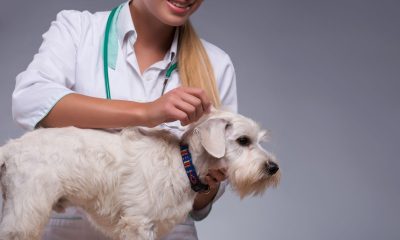
 Health Issues3 years ago
Health Issues3 years agoRecognizing and Treating Common Skin Conditions in Dogs
-
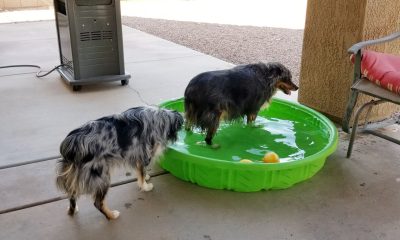
 Health Issues3 years ago
Health Issues3 years agoHow to Prevent Heat Stroke in Dogs
-
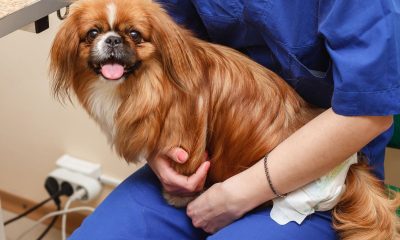
 Health Issues3 years ago
Health Issues3 years agoRecognizing And Treating Urinary Tract Infections in Dogs
-

 Nutrition & Supplements3 years ago
Nutrition & Supplements3 years agoWhen To Use Dog Supplements

























































